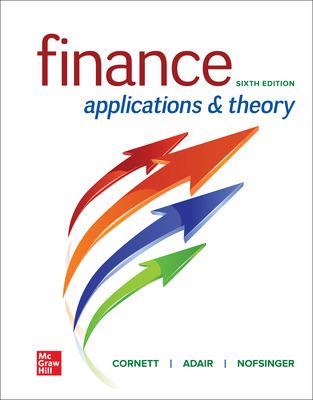Answered step by step
Verified Expert Solution
Question
1 Approved Answer
1) Star Alien (US company) sold equipment to Heavy Metal Industry (Italian company) for 1-million-euro receivable in one year. The current spot rate is $1.15/
1) Star Alien (US company) sold equipment to Heavy Metal Industry (Italian company) for 1-million-euro receivable in one year. The current spot rate is $1.15/ and the one-year forward rate is $1.20/. The annual interest rate is 5% in Italy and 8% in the United States. Star Alien can also purchase a one-year put option on the euro at the strike price of $1.18 per euro for a premium of 9 cents per Euro. Assuming that the forward exchange rate is the best predictor of the future spot rate, what is the expected future dollar revenue when the option hedge is used?
a) $ 1,150,000.
b) $1,297,200.
c)$1,180,000.
d) $1,102,800.
e) $1,200,000.
f) $1,082,800 .
g) $1,180,000.
2) Star Alien (US company) sold equipment to Heavy Metal Industry (Italian company) for 1-million-euro receivable in one year. The current spot rate is $1.15/ and the one-year forward rate is $1.20/. The annual interest rate is 5% in Italy and 8% in the United States. Star Alien can also purchase a one-year put option on the euro at the strike price of $1.18 per euro for a premium of 9 cents per Euro. What is the future dollar proceeds of this sale using the money market hedge?
a) $ 1,102,800 .
b) $1,200,000.
c) $1,182,857.
d) $1,118,056.
e) $1,180,000.
f) $1,150,000.
3) How does home bias impact financing diversification and the cost of capital for investors?
a) Home bias often leads to increased financing diversification as investors prioritize international assets over domestic ones.
b) Home bias decreases the cost of capital as it promotes a concentrated investment approach, reducing exposure to international market risks.
c) Home bias tends to increase financing diversification by encouraging investors to allocate their investments across various domestic sectors.
d) Home bias has no impact on financing diversification or the cost of capital, as it is primarily related to individual investor preferences.
e) Home bias may result in a higher cost of capital for investors, as it limits exposure to global opportunities and diversification benefits.
4) A convertible bond pays interest annually at a coupon rate of 8% on a par value of $1,000. The bond has 4 years maturity remaining and the discount rate on otherwise identical non-convertible debt is 4% . The bond is convertible into 55 shares of common stock. Today's closing stock price was $20. What is the approximate floor value of this bond?
a) $ 1,000 .
b) $ 1,056.
c) $867.
d) $953.
e) $ 1,100.
f) $ 1,145.
g) $ 1,234.
5) Which of the following statements are true regarding the impact of exchange rate changes on a firm's value? Select all that apply!
a) A firm is usually subject to high degrees of operating exposure when either its cost or its price (not both) is sensitive to exchange rate changes.
b) Operating exposure reflects the impact of exchange rate changes on a company's future investing cash flows.
c) The degree to which a firm's operating cash flows will be affected by random changes in exchange rates is referred to as asset exposure.
d) Conversion effect is related to changes in the firm's cost and price , both of which are sensitive to exchange rate changes.
e) Competitive effect refers to how a currency appreciation or depreciation alters the firm's competitive position in the marketplace and affects operating cash flow.
f) Asset exposure refers to the risk that the value of assets and liabilities can change due to exchange rate movements
Step by Step Solution
There are 3 Steps involved in it
Step: 1

Get Instant Access to Expert-Tailored Solutions
See step-by-step solutions with expert insights and AI powered tools for academic success
Step: 2

Step: 3

Ace Your Homework with AI
Get the answers you need in no time with our AI-driven, step-by-step assistance
Get Started


